‘Living among the trees’ finds form in a Miami house design
The experience of ‘living among the trees’ takes centre stage in a Miami house by Strang Design

Wildwood Residence by Strang Design takes ‘living among the trees’ to a new level with a design that creates a seamless blend between the house and the pre-existing landscape. Nestled within the gated community of Camp Biscayne, the residence provides a welcome moment of respite from the nearby bustling sidewalks of Coconut Grove, Miami’s oldest neighbourhood.
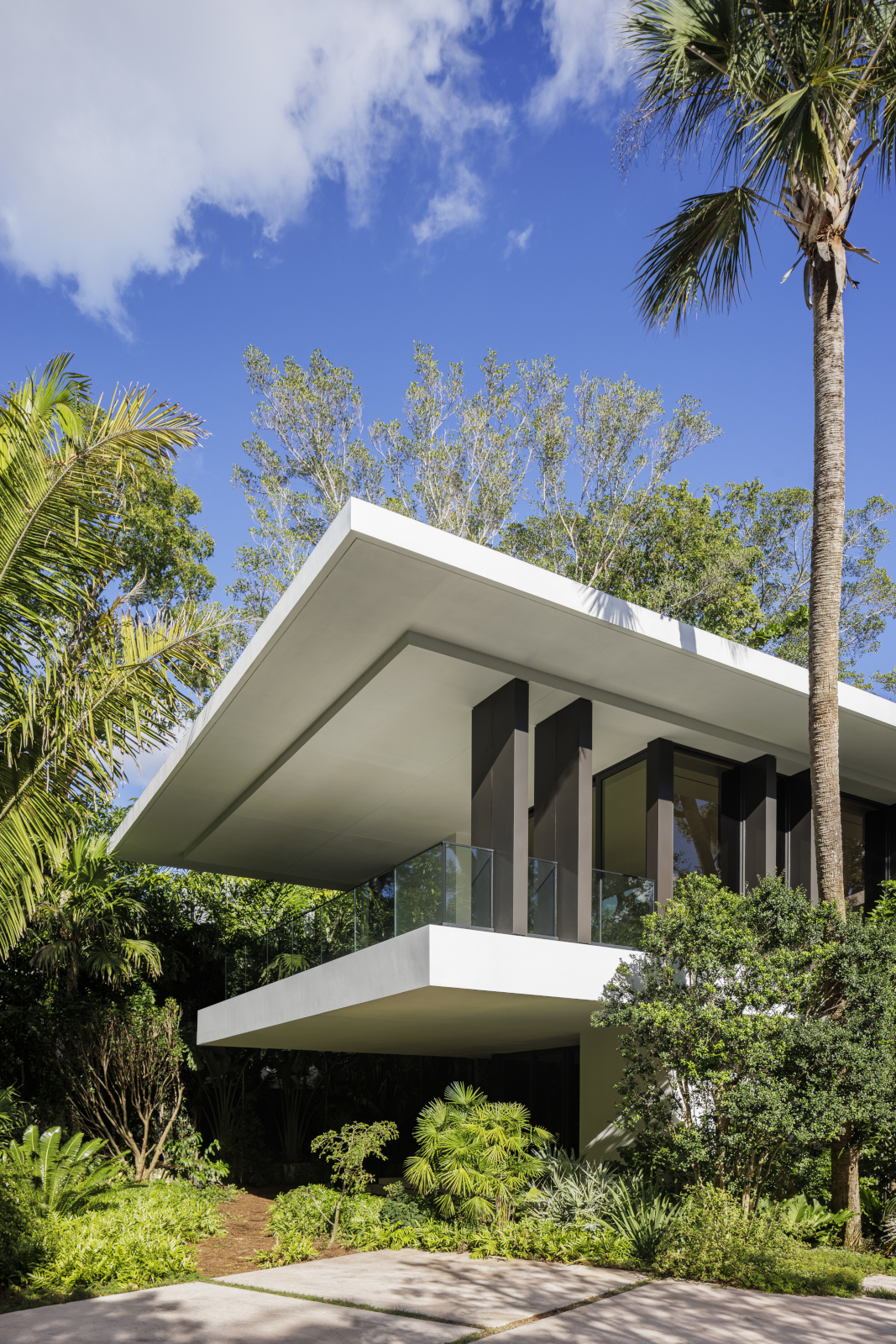
Entrance to Wildwood Residence
‘Living among the trees’: where preservation meets design
‘A large oak tree was preserved within the arrival courtyard and the massing of the house bends around this feature,’ explains Max Strang, of the process of designing with preservation in mind. Carved out of a site where tropical treetops form a dense ‘jungle-like’ canopy, ‘sun-seeking design strategies’ were employed to create a balance between immersing the house among the trees while allowing it space to breathe.
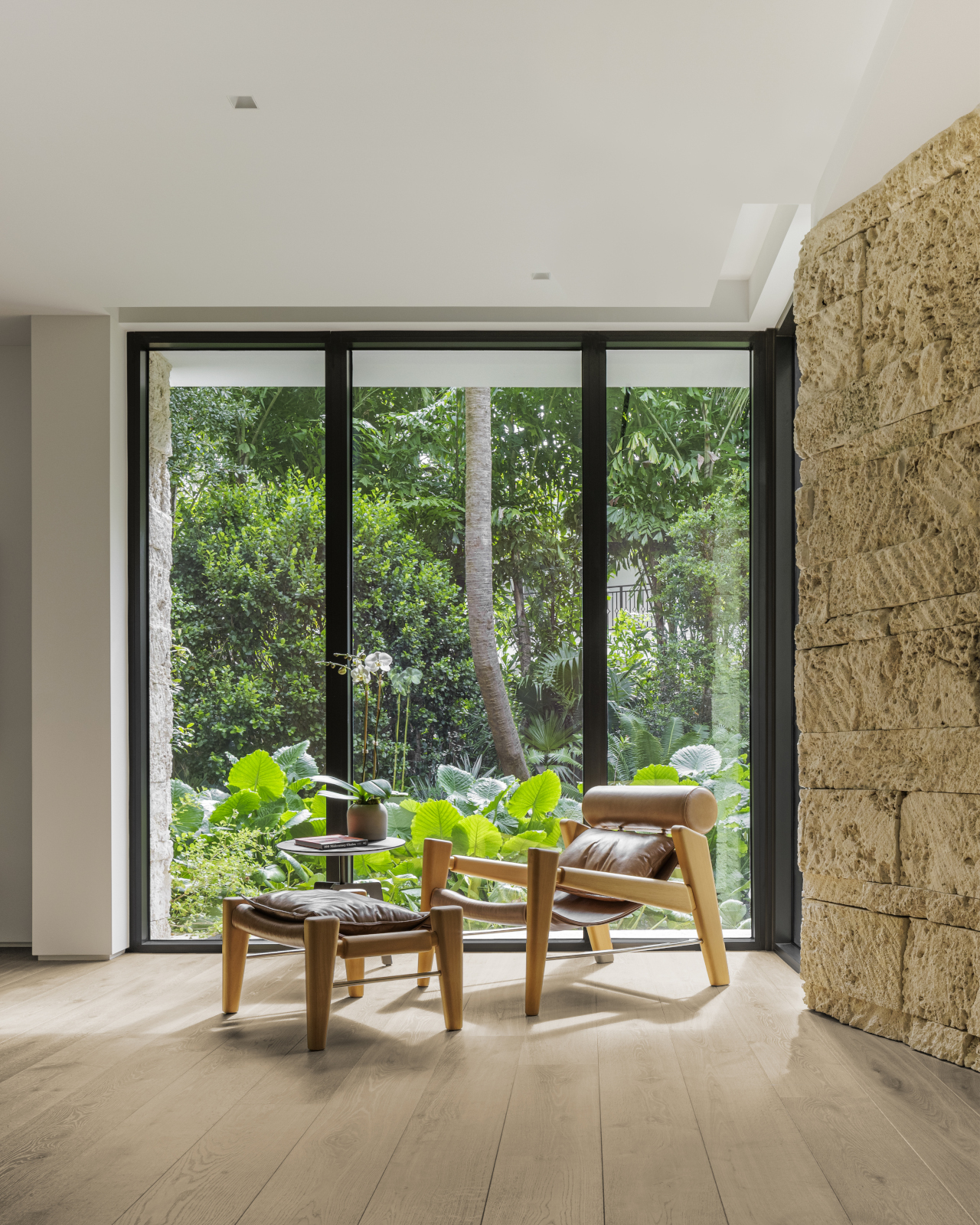
Inside view from Wildwood Residence
Immersion and inversion
On creating an experience of ‘living among the trees’, Strang reflects, ‘Instead of the customary design layout of the home’s public spaces being on the ground floor with private bedrooms above, that formula was inverted.’ These inversions naturally cocoon private spaces below, allowing public amenities above, such as the swimming pool and terrace, to have constant access to the sky.

Poolside view at Wildwood Residence
Within the house, walls of glass showcase the dense network of surrounding nature, creating window portals that nod to a ‘treehouse’ experience. This narrative continues upstairs, with expansive views framed by deep vertical architectural fins. These distinctive dark aluminium elements were selected to ‘mimic the effect of tree trunks’, while also providing structure, privacy and solar control.
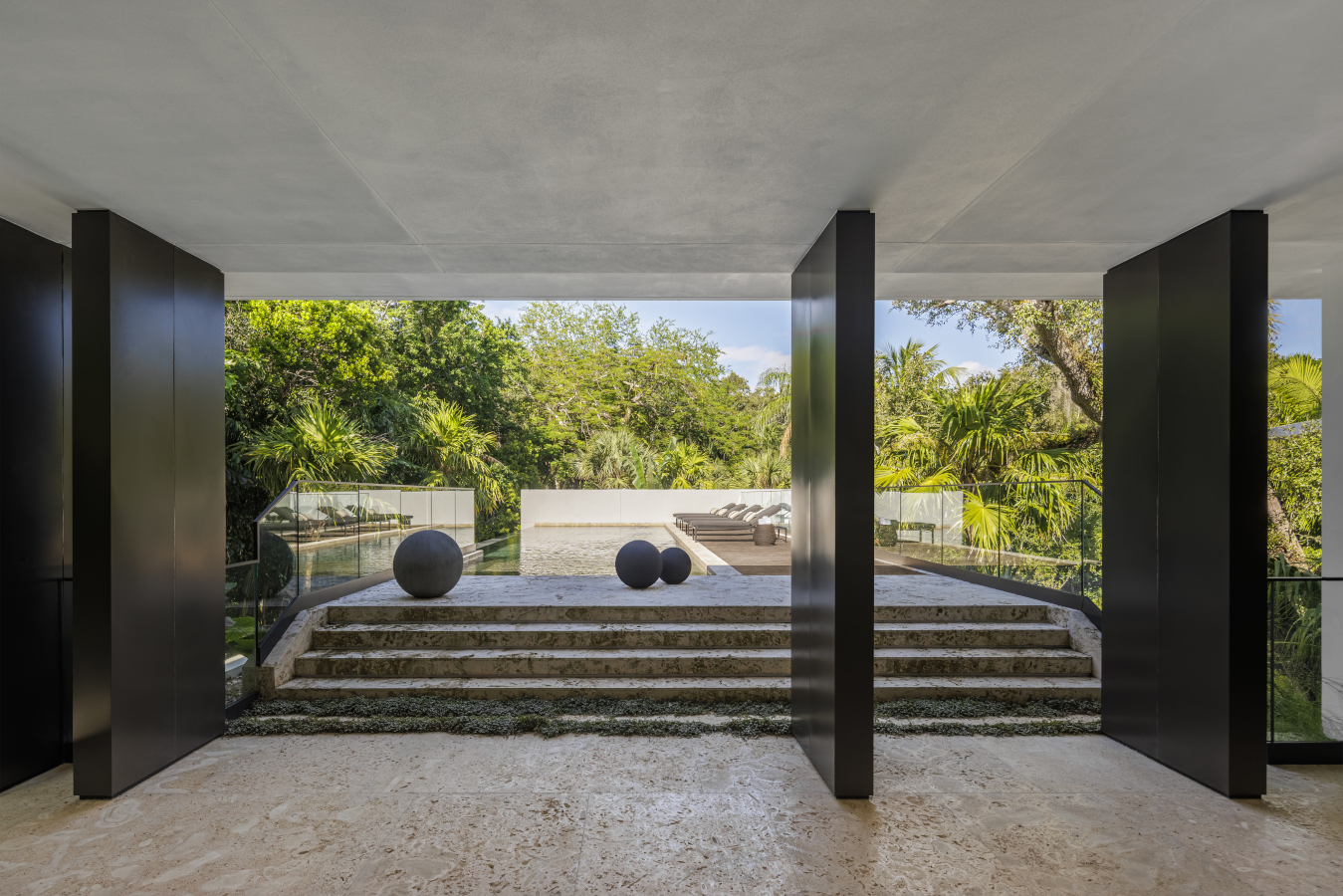
Looking out to poolside terrace
Grounding through materials
Well-versed in incorporating locally sourced materials into its designs, Strang has made use of local stones such as Oolitic limestone, Caribbean Coral stone and split-face Florida Keystone. ‘The appearance of fossilised corals and shells anchor the home to the surrounding geology of the region,’ thus enhancing the home’s consistent blend and sense of belonging within the landscape.
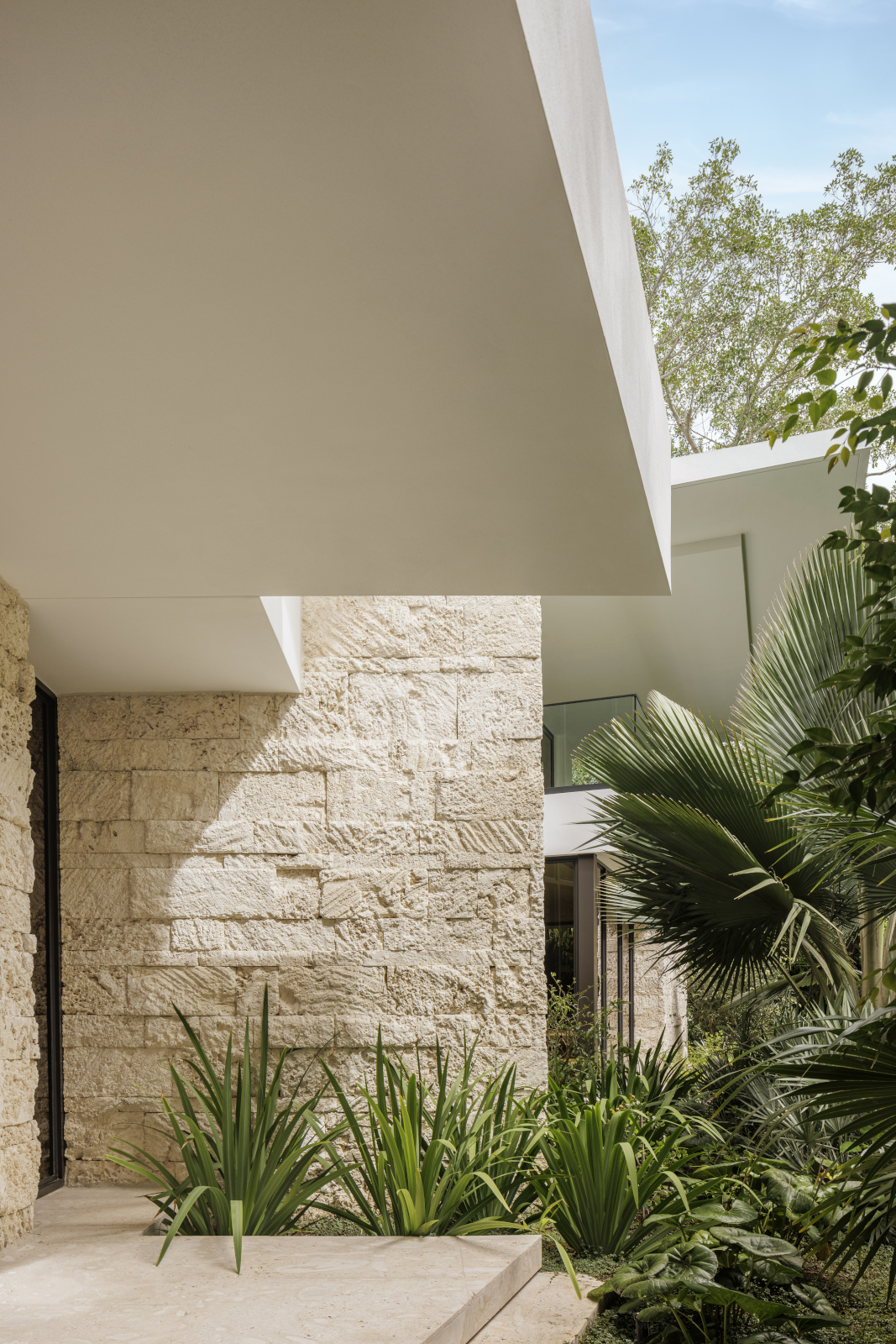
Exterior wall details at Wildwood Residence
While there is an enduring sense of coalescence between the house and the original landscape, contrasts between the white roof and dark metal material help ‘sharply define how the house meets the sky’. There are also the typical benefits of a white roof in a subtropical climate (reflecting the sun, and protecting the interior from overheating).
The dialogues created within and outside this home, make it an exemplary case of designing in harmony with the existing conditions; crafting locally sourced materials to create an enhanced experience of ‘living among the trees’.
Receive our daily digest of inspiration, escapism and design stories from around the world direct to your inbox.
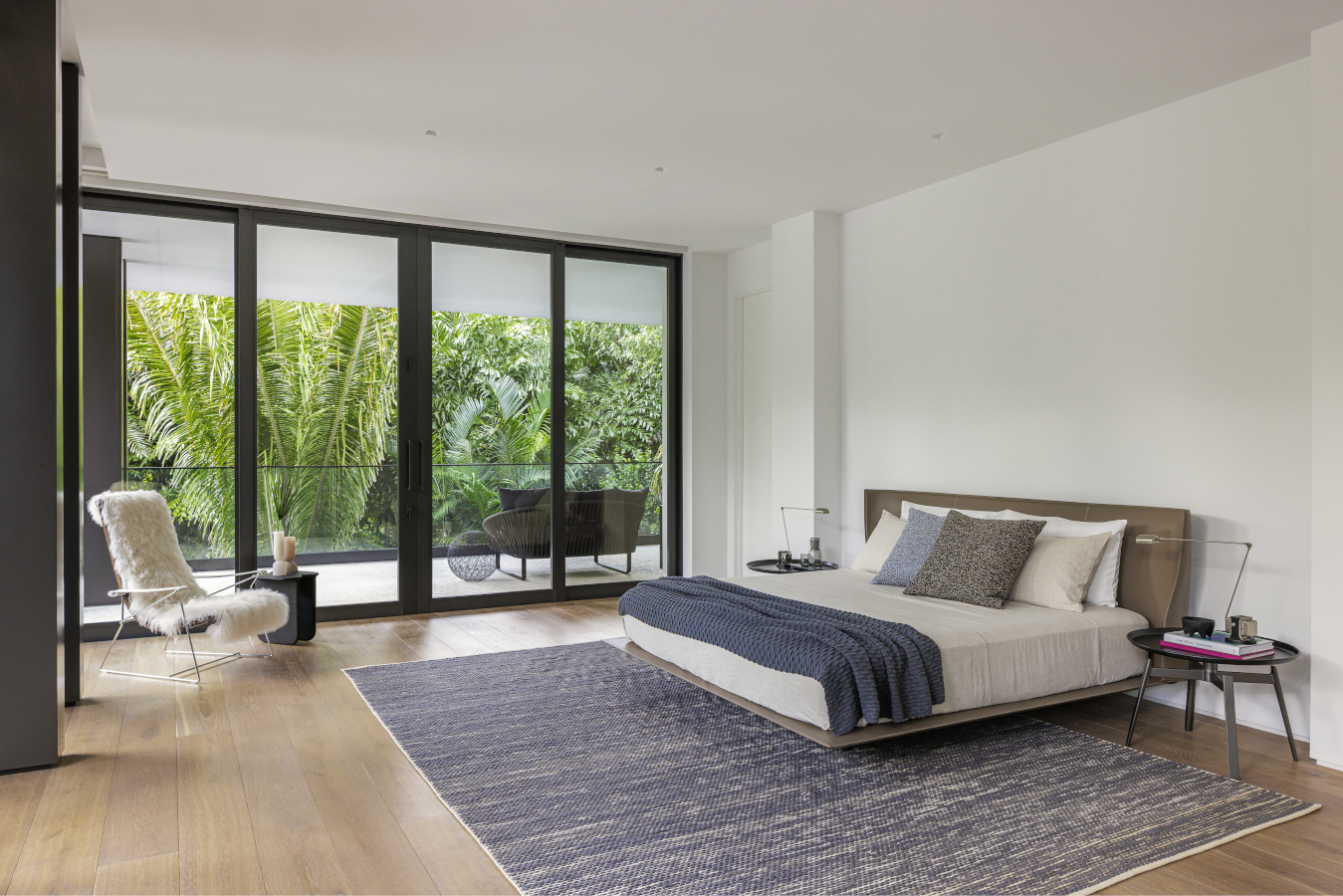
Bedroom view at Wildwood Residence
Nana Ama Owusu-Ansah is a writer and photographer from London. She first wrote for Wallpaper* in 2021, in a series on the new vanguard of African designers practising in Africa and its diaspora. She is drawn to projects centring on decolonial approaches to art, architecture, as well as community and sustainability. Nana Ama read Economics and Spanish at University of St Andrews, and, as an avid linguist, is passionate about using accessible language to invite new audiences to engage in design discourse.
-
 Curvilinear futurism meets subtropical beaches at Not A Hotel’s ZHA-designed Okinawa retreat
Curvilinear futurism meets subtropical beaches at Not A Hotel’s ZHA-designed Okinawa retreatZaha Hadid Architects has revealed the design for the first property in Not A Hotel’s futuristic new Vertex collection, coming soon to southern Japan
-
 Gorden Wagener leaves the helm of Mercedes-Benz design after 28 years with the company
Gorden Wagener leaves the helm of Mercedes-Benz design after 28 years with the companyThe German designer is stepping down from the role of chief design officer at Mercedes-Benz. We look back at his influence and impact on the world of automotive and luxury design
-
 These Christmas cards sent by 20th-century architects tell their own stories
These Christmas cards sent by 20th-century architects tell their own storiesHandcrafted holiday greetings reveal the personal side of architecture and design legends such as Charles and Ray Eames, Frank Lloyd Wright and Ludwig Mies van der Rohe
-
 Step inside this resilient, river-facing cabin for a life with ‘less stuff’
Step inside this resilient, river-facing cabin for a life with ‘less stuff’A tough little cabin designed by architects Wittman Estes, with a big view of the Pacific Northwest's Wenatchee River, is the perfect cosy retreat
-
 Remembering Robert A.M. Stern, an architect who discovered possibility in the past
Remembering Robert A.M. Stern, an architect who discovered possibility in the pastIt's easy to dismiss the late architect as a traditionalist. But Stern was, in fact, a design rebel whose buildings were as distinctly grand and buttoned-up as his chalk-striped suits
-
 Own an early John Lautner, perched in LA’s Echo Park hills
Own an early John Lautner, perched in LA’s Echo Park hillsThe restored and updated Jules Salkin Residence by John Lautner is a unique piece of Californian design heritage, an early private house by the Frank Lloyd Wright acolyte that points to his future iconic status
-
 The Architecture Edit: Wallpaper’s houses of the month
The Architecture Edit: Wallpaper’s houses of the monthFrom wineries-turned-music studios to fire-resistant holiday homes, these are the properties that have most impressed the Wallpaper* editors this month
-
 The Stahl House – an icon of mid-century modernism – is for sale in Los Angeles
The Stahl House – an icon of mid-century modernism – is for sale in Los AngelesAfter 65 years in the hands of the same family, the home, also known as Case Study House #22, has been listed for $25 million
-
 Houston's Ismaili Centre is the most dazzling new building in America. Here's a look inside
Houston's Ismaili Centre is the most dazzling new building in America. Here's a look insideLondon-based architect Farshid Moussavi designed a new building open to all – and in the process, has created a gleaming new monument
-
 Frank Lloyd Wright’s Fountainhead will be opened to the public for the first time
Frank Lloyd Wright’s Fountainhead will be opened to the public for the first timeThe home, a defining example of the architect’s vision for American design, has been acquired by the Mississippi Museum of Art, which will open it to the public, giving visitors the chance to experience Frank Lloyd Wright’s genius firsthand
-
 Clad in terracotta, these new Williamsburg homes blend loft living and an organic feel
Clad in terracotta, these new Williamsburg homes blend loft living and an organic feelThe Williamsburg homes inside 103 Grand Street, designed by Brooklyn-based architects Of Possible, bring together elegant interiors and dramatic outdoor space in a slick, stacked volume